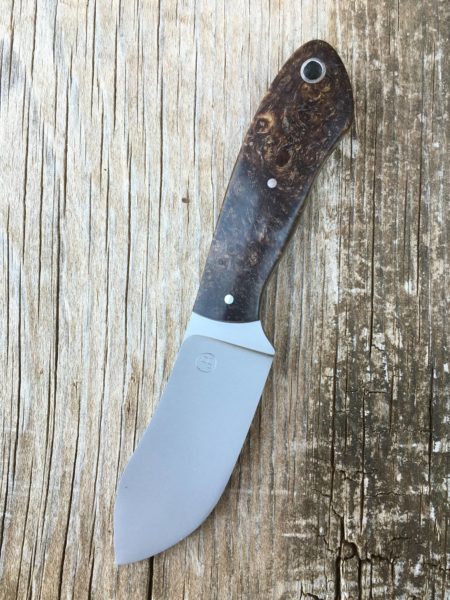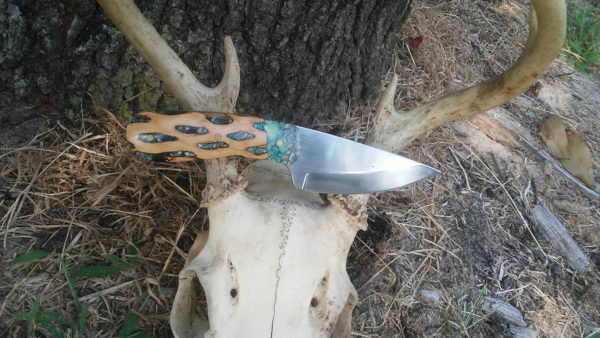Depending on where you live and by what method you hunt, deer season is underway. There are any number of blade patterns you could select for a skinning knife, but why are they shaped the way they are? What is the maker considering when he crafts a knife he calls a skinner? Let’s look at 20 examples of 5 types of skinners, plus an extra.
Bull-Nose Skinners
“The blunt tip in conjunction with the trailing point helps from punching through the hide,” noted Travis Fleming of Fleming Fabrications in North Texas about bull-nose skinners.

Josh Bryant of JB Custom Knives put it this way: “The bump and large drop at the tip are intended to go over guts without popping them.”

“I like a skinner made with a CPM steel,” Mike Cleveland of Half Life Knives commented. “(It) keeps its edge longer and that means more game prepared before sharpening.” Mike added: “I prefer the fuller belly for its ability to cape around tight areas. I value that over the ability to stab in a skinner. With this style of blade you’ll finish ahead of those with a sharper point.”

<<<Last Page: Miscellaneous Skinners
Next: Drop-Point Skinners>>>
Editor’s Note: This article originally appeared at BladeMag.com.
Deer & Deer Hunting is excited to partner with the American Knife Company to deliver this exclusive line of hunting knives. Emblazoned with the DDH logo right on the blade, this classic design puts a modern twist on an old favorite of deer camps across North America. Micarta handles offer a firm grip in slippery conditions common to bad weather, field dressing, butchering and the rugged demands of the hunt. A healthy dose of chromium in the A2 steel blade means it’ll stand up to the worst you can throw at it. The clip point blade design is as versatile as it comes, ready to make any task at deer camp a treat. Get Yours Now


